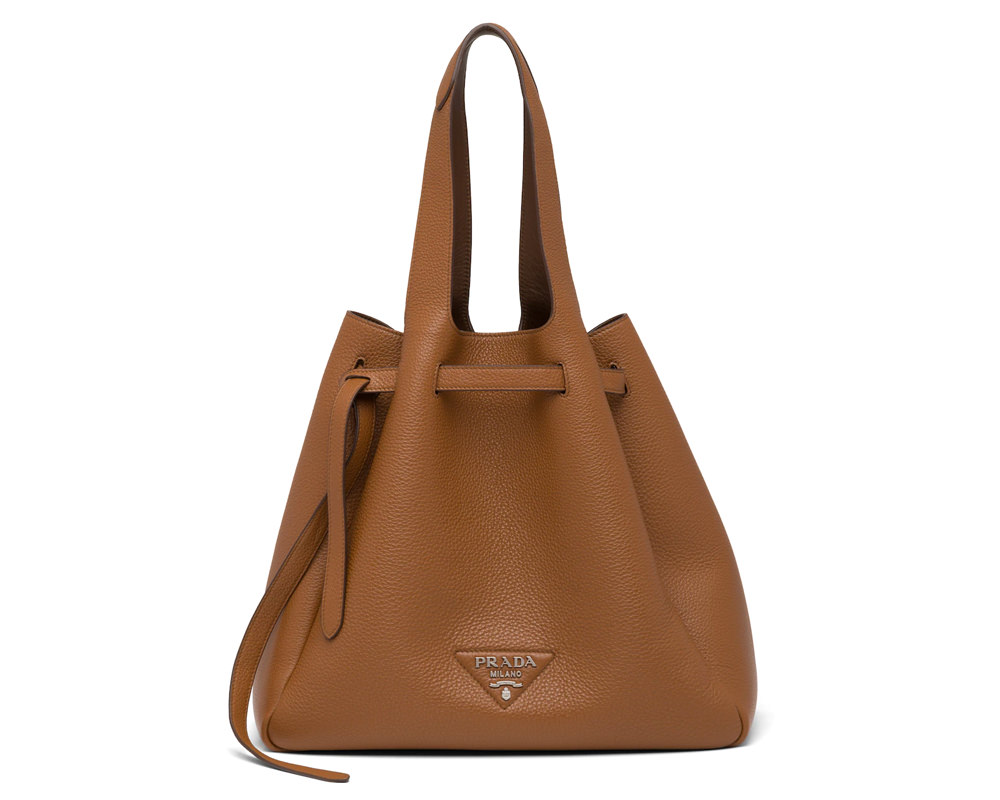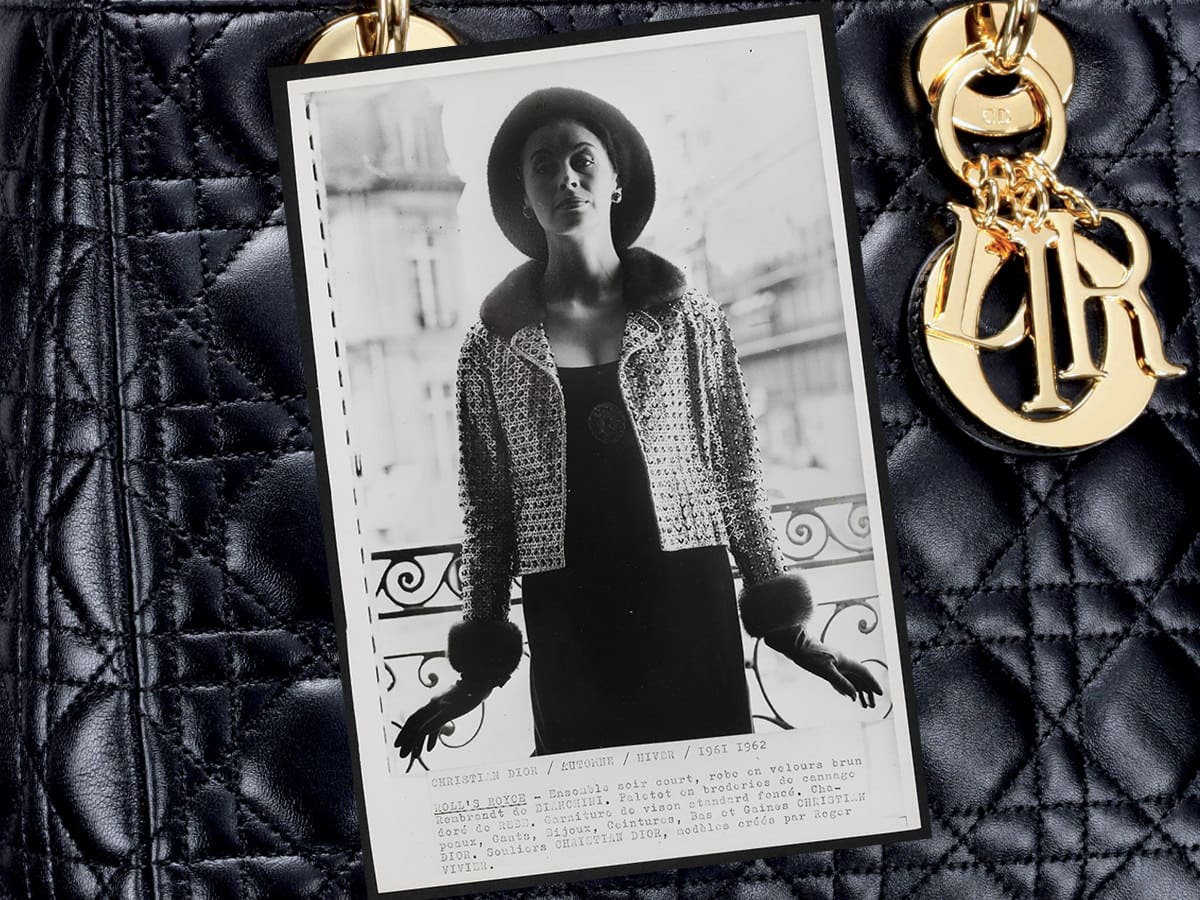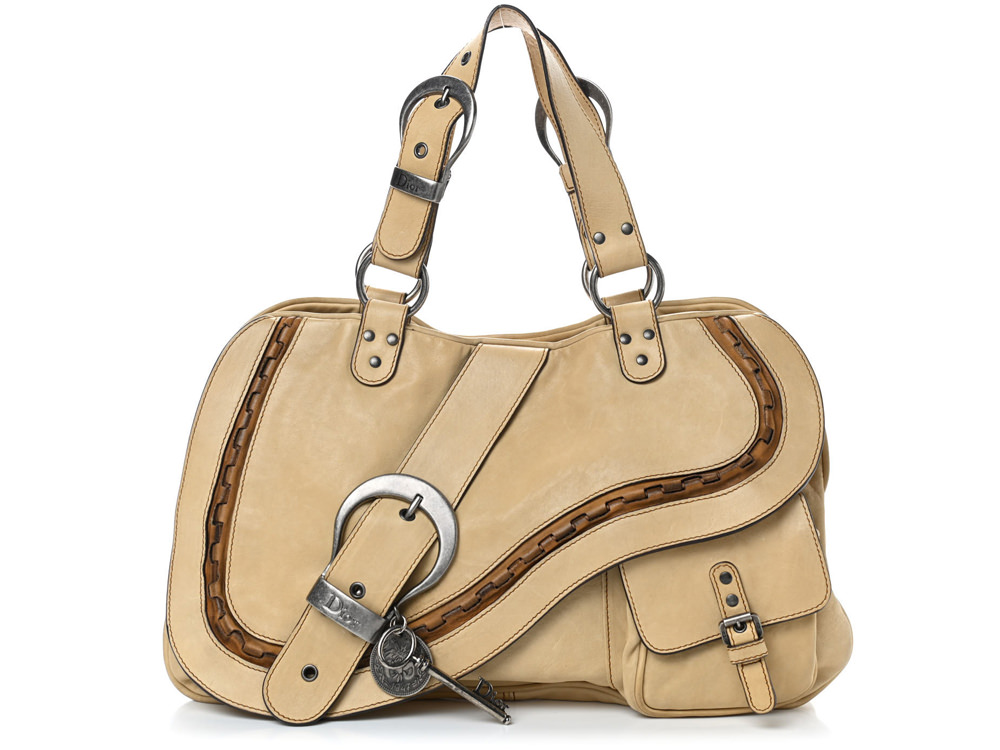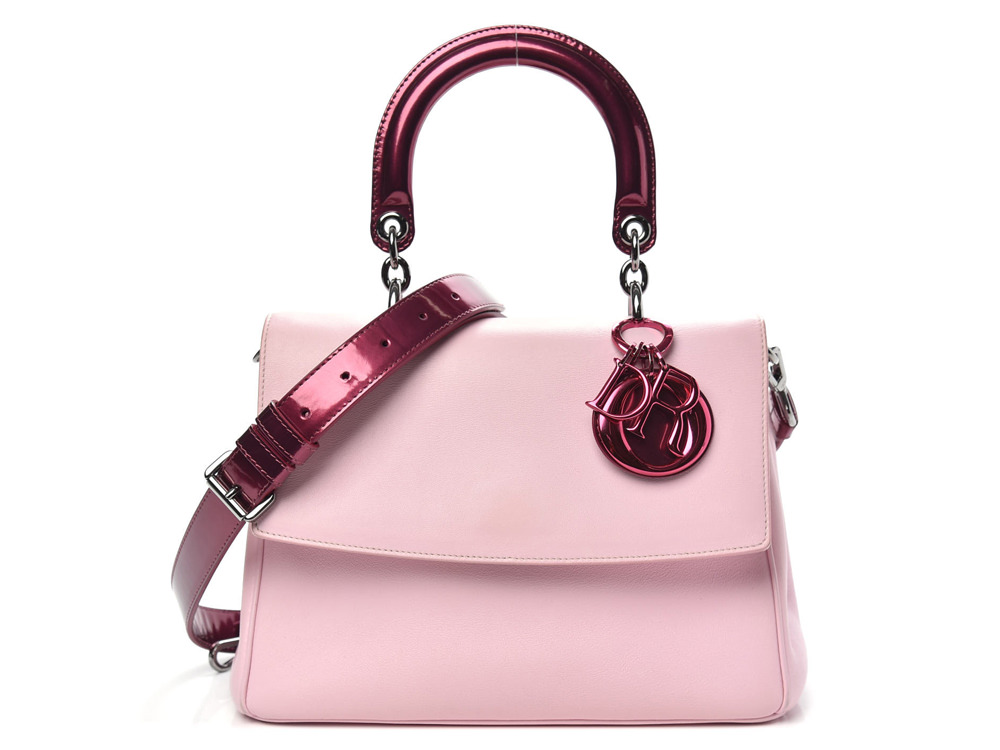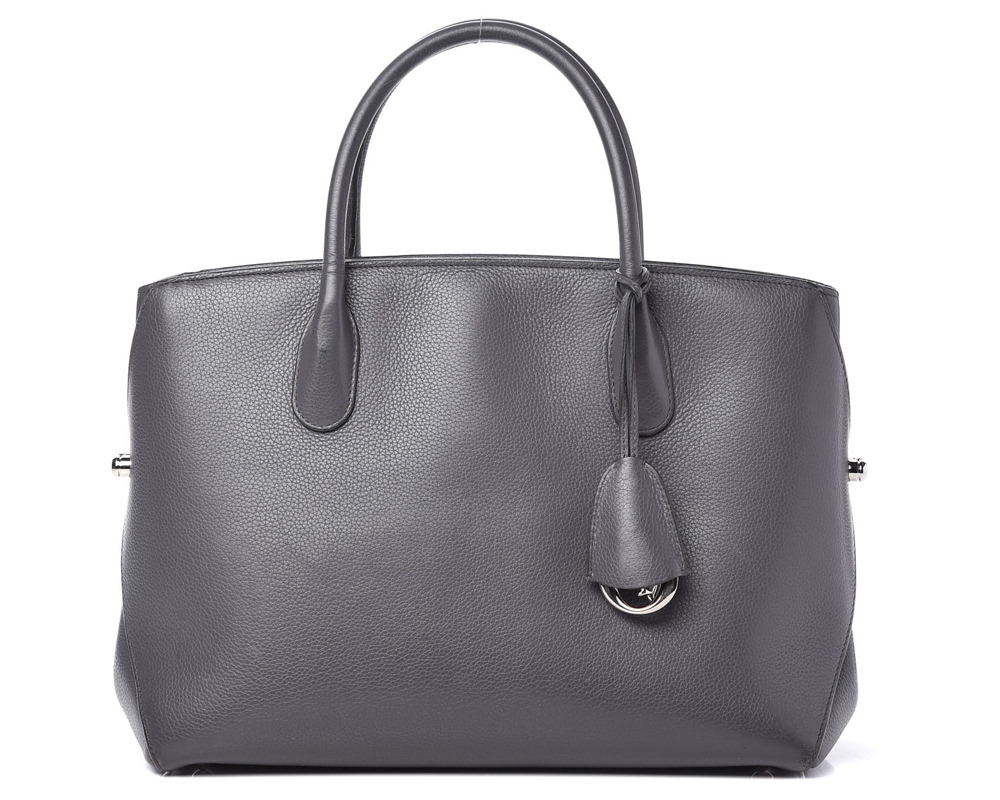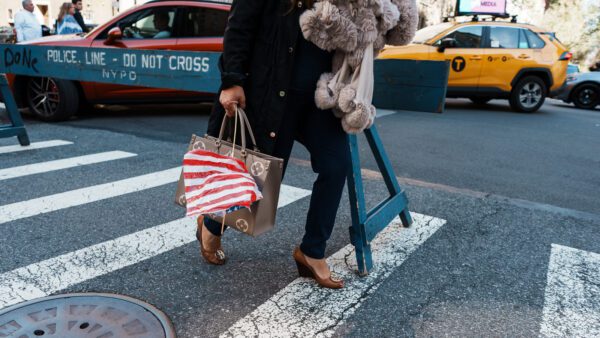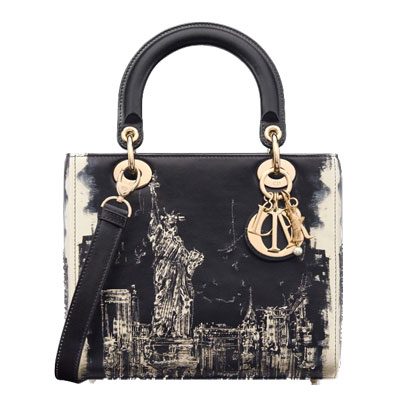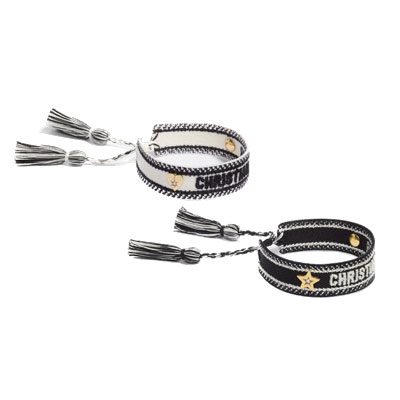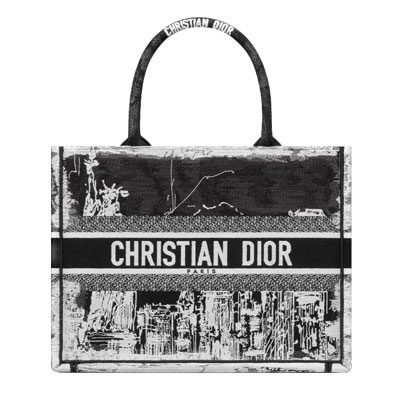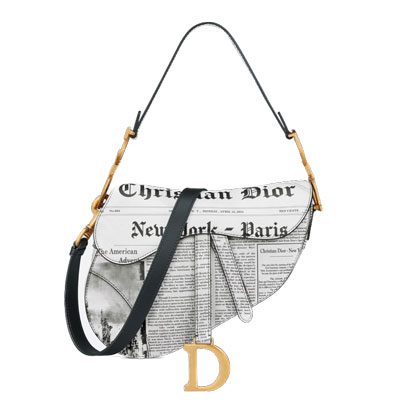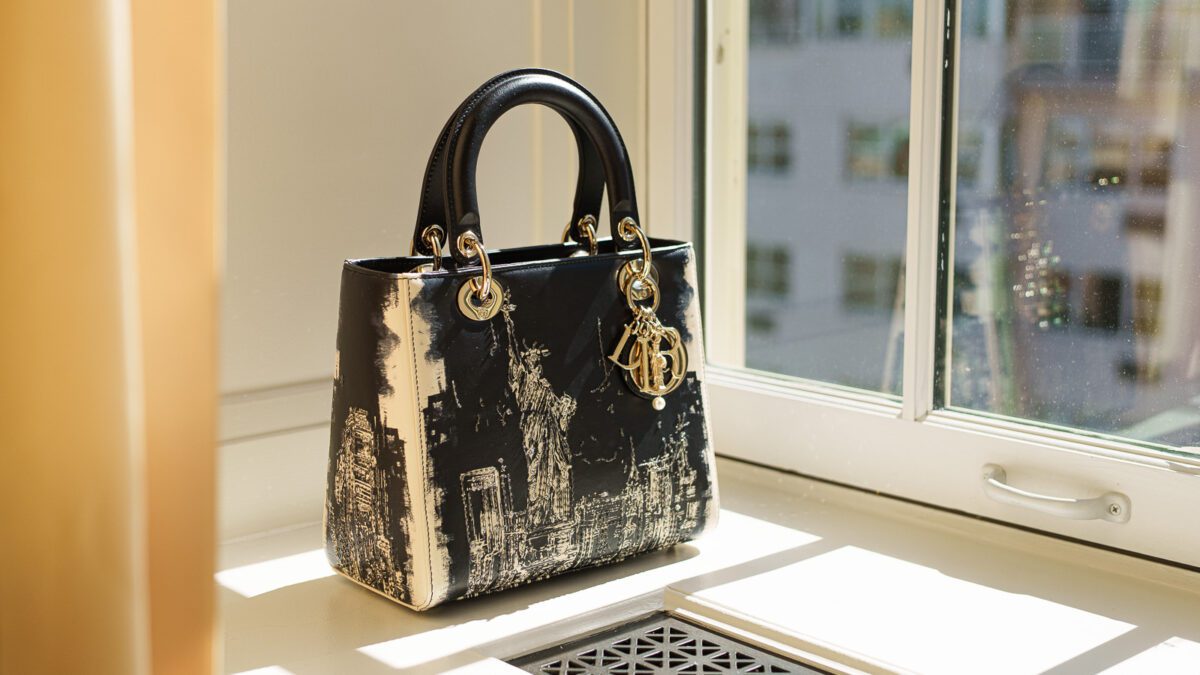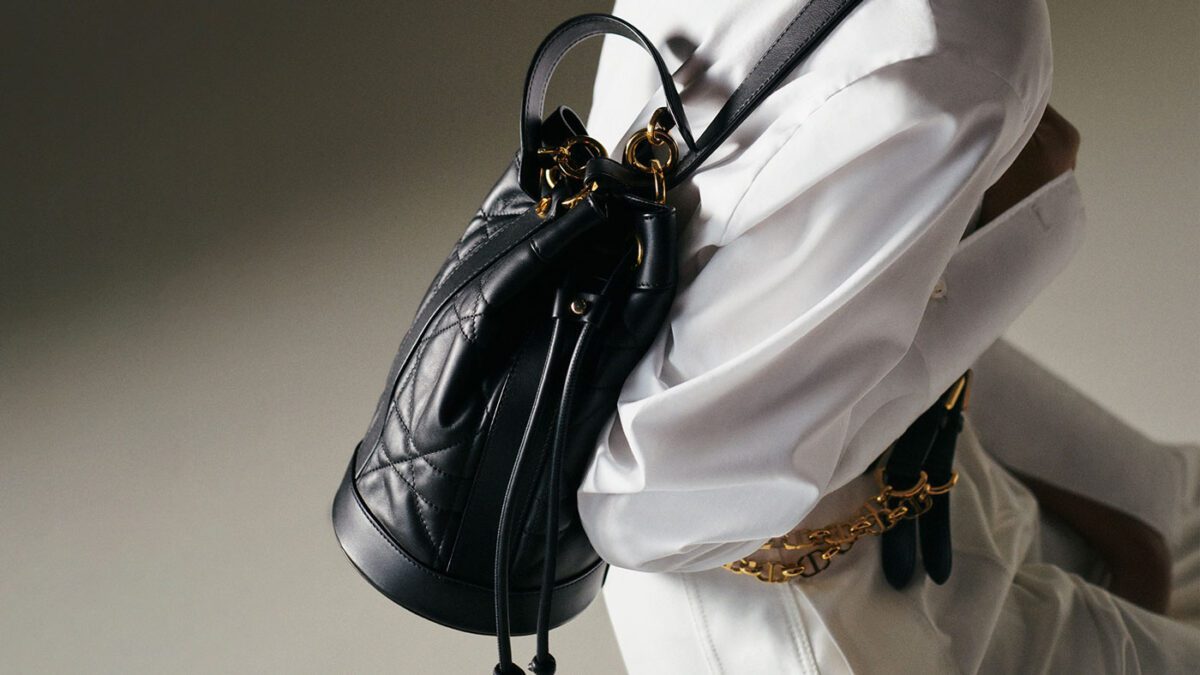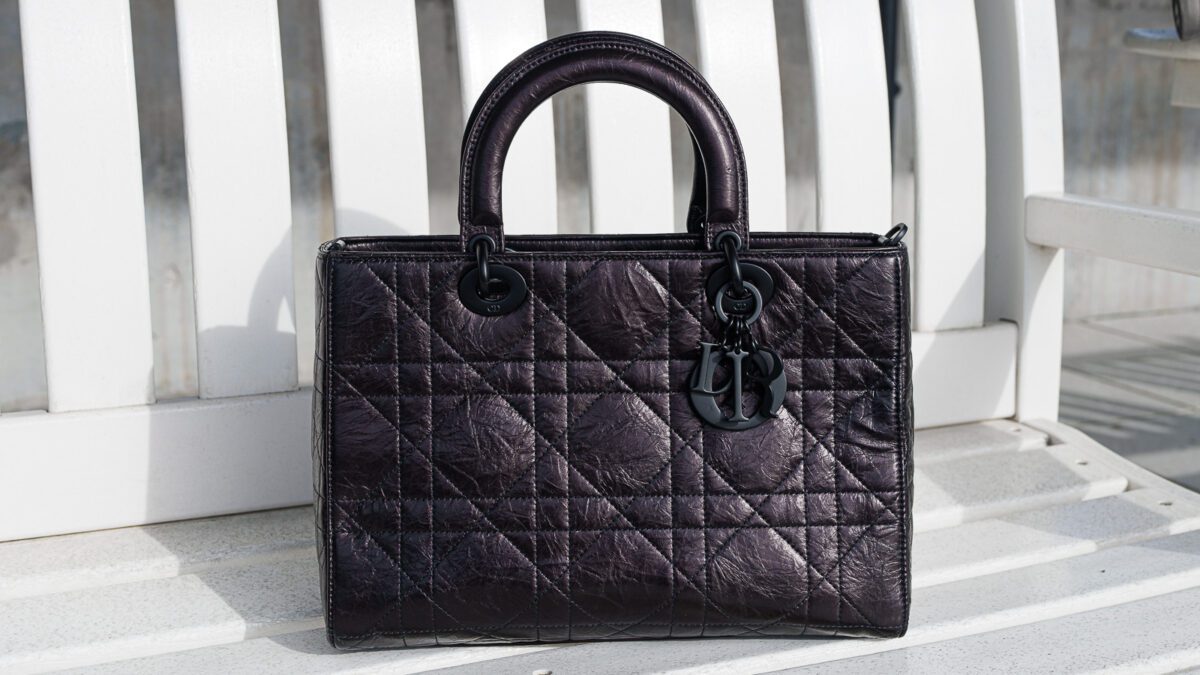Usually, I’m all in for new designs. I’m not one of those people who whine, “they don’t make ‘em like that anymore,” and transitions between Creative Directors, especially unexpected ones (like Bottega Veneta), excite me. Plus, there’s something really gratifying about scrolling through an online retailer to stumble upon a new but not plastered-on-every-surface-ever design that still manages to be functional and attractive. Like this absolutely gorgeous Prada Logo Plaque Tote:
Strangely, I’m supposedly writing about Dior and somehow got distracted by Prada. Talk about poor attention spans.
Speaking of Dior, though, something about its present lines puts me in a bit of a dilemma. I do admire how its designs appear relatively low-key, less in an “under-the-radar, absolutely incognito” way, and more in a “why yes, you only see me on selective people” kind of way. And it doesn’t feel as omnipresent in every celebrity and their grandmothers’ closets either, as Hermès and Chanel’s pieces inevitably tend to do while performing just as well in the “timeless classics” category.
But surprisingly, if there’s something about Dior that I like more than its permanent collection, it’s the house’s discontinued designs. Yes, I absolutely adore the Lady Dior and its oh-so-luxe lambskin Cannage, but can you think of something even better? The Dior Chri Chri Tote, featuring the same Cannage, along with a chain drawstring closure (I’m finding myself drawn to this as of late) and even an unassuming padlock! In fact, there are a slew of fabulous-looking discontinued Dior bags on the resale market that have me scratching my head every time I come across them, wondering what on earth could have influenced Dior to halt their production.
Well, what are these designs, and how did they get discontinued? To understand that, we need to go a little bit into Dior’s past, specifically to 1947, when Christian
Dior unveiled his first collection on 30 Avenue Montaigne, which immediately garnered a fan-following from the then Editor-In-Chief of Harper’s Bazaar, Carmel Snow, who coined the term “New Look” to describe the collection, as well as the likes of Rita Hayworth, Marlene Dietrich, and Ava Gardner.
Featuring tight waists and voluminous flowing skirts, Christian Dior was one of the architects behind making Paris “the fashion capital of the world.” Inpost-WWIII France, he used fabrics measuring up to 20 yards in length for his dresses, whereas most of his counterparts barely used a couple. However, Dior’s untimely death in 1957 put the 21-year old Yves Saint Laurent in the position of the house’s Artistic Director, and arguably the brand’s trend of gravitating between designs started with him. Saint Laurent constructed dresses with more relaxed silhouettes that continuously attracted heavy criticism until he was eventually called to the army and relieved of his role in 1960. After the YSL-era, Marc Bohan was appointed as the brand’s Creative Director, who promptly reinstated and popularized Christian Dior’s design principles once again, simultaneously launching the house’s first ready-to-wear collection in 1967.
In 1989, Gianfranco Ferré took the brand’s artistic helm, creating yet another style concept described as “refined, sober and strict.” It was also during his era that the French First Lady, Bernadette Chirac, requested a special handbag for the Princess of Wales. Unofficially named the Chouchou, its creation is how Lady Diana became one of the first influencers of the handbag world and made the structured little handbag the Lady Dior as we know it today. This was also the first time Dior (now a part of LVMH) started earning considerable revenue from its leather goods and became the beloved handbag-focused luxury house it is most renowned for.
From 1997 onwards, the brand remained continually at the forefront of controversies, thanks to the appointment of John Galliano as its Creative Director. Building upon the erotic-chic trend initiated by Tom Ford of Gucci, the most prominent bag from the designer was the Dior Saddle, which shot to fame in part thanks to Carrie Bradshaw in Sex and the City. Although the Saddle was recently reintroduced, the sheer amount of variations from the Galliano-era made these pieces really limited edition – from Rastafarian to Maharaja-pattern to newspaper-printed editions, along with jewel-encrusted maximalist versions loudly proclaiming the brand’s logo.
An updated take on the Saddle was the Gaucho, a larger, more work-appropriate, and boho-chic version that’s still available on the resale market for non-eye-watering prices. Other notable styles from the Creative Director include the Gambler, with its dice emblems, and the Detective Bag with a framed closure and multi-pocket, “CD” accented body in hordes of bold and neutral colors. Meanwhile, the Trotter pattern remained a staple on various styles, from totes and Boston bags like the Romantique to Pochettes like the No. 1. However, the most striking part about the Galliano-era was his shows and his overall aesthetic, which was wild, chaotic and undoubtedly, popular, kept both lovers and haters excited, right until his scandalous departure from the brand in 2011.
Somewhere during and in the immediate aftermath of Galliano’s reign, Dior began releasing multiple handbags all styled with the house’s iconic quilted Cannage. Beside the Chri Chri, the Panarea served the purpose of large shopping totes (as was the norm of the era), along with the chain-accented La Trente, a large, drawstring iteration of the Lady Dior tote. Another celeb favorite of the period was the Dior Granville, a softer, more north-south take on the Lady Dior (there was also a Boston bag iteration of this) featuring an open-top. The Cannage wasn’t limited to just leather either. Nylon and satin versions of the pattern were featured on the Charming Lock bag from this era. Not only that, a major addition to the Cannage line was the New Lock of 2010 and Miss Dior of 2011, both of which were absolute favorites amongst Dior-lovers, many of whom lament to date the death of these iconic flap bags.
In 2012, Galliano’s over-the-top style at Dior was replaced by the minimalist, clean lines of Raf Simons and simplistic designs, including the Diorissimo, a gorgeous open-top satchel made of plain leather with a contrasting, often brighter interior. Another similarly shaped purse was the Be Dior (Charlize Theron wears it on Atomic Blonde, and now I will forever associate it with glamorous espionage), which featured a flap closure and a top handle. On the other hand, a few significant non-Lady-Dior-like designs were released in this era to immense popularity, like the Diorama Flap and the Diorever top-handle bag, both of which look absolutely stunning in the metallic shades of gold and silver. I find them so radically different from what Dior has done while still maintaining the concept of quiet luxury that I can’t help but weep about their discontinuation. Another big love of mine from the Dior of the Raf Simons era? The Dior Bar Tote *insert crying emoji*.
And finally, in 2016, Maria Grazia Chiuri, the heavy proponent of Feminism, took charge of Dior, embracing the house’s feminity, turning heads, and creating a lot of stir due to being the first female Creative Director for the house. With her arrival, most designs from previous artistic directors quickly went out of production. A slew of new designs like the J’adior flap, the Dio(r)evolution, and the Dioraddict were released. While all of them gained a lot of attention, unfortunately, none of them remain in production (again, no clue why), even though the J’adior, in particular, is really popular on this side of the world. During this period, another starkly unique Dior tote, the CDBee, was launched (it featured an actual bee!), and that too is now lost. Today, we have the Dior Montaigne, Bobby, Caro, St. Honoré, and the Book Tote from Chiuri’s creations that remain in production (for now).
Given that revisiting archives and reviving old designs has now become a trend in itself and one that Dior is no stranger to, what bag would you want Dior to bring back? Let us know! And if you too were a proponent of the Dior Bar Tote, let’s sob together!

